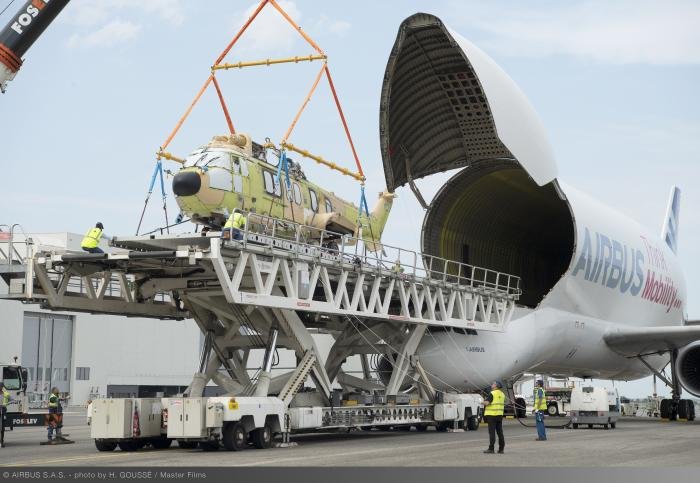Airbus has detailed its plans for the five A300-600ST BelugaST it has phased out in favour of the larger A330-700 BelugaXL.
With the first-generation super transporters no longer required to support its airliner production lines, the European aerospace giant has opted to offer freight companies an outsized freight transportation solution.
Airbus Beluga Transport (ABT) is to provide large cargo transportation services to commercially contracted customers, with the company identifying space, energy, military, aeronautic, maritime and humanitarian sectors as potential areas for growth.
Airbus states that the company’s first mission took place at the end of 2021 when ABT was contracted to deliver a helicopter from Airbus Helicopters’ Marignane, France production facility to Kobe, Japan. The flight was operated by Beluga #3, F-GSTC (c/n ) which made refuelling stops in Warsaw, Poland; Novosibirsk, Russia and Seoul, South Korea before reaching Kobe.
Key.Aero understands that this was the delivery of All Nippon Helicopter’s first Airbus Helicopters H160, JA01NH (c/n 1004).

Once Airbus has built and placed all six of its BelugaXLs into service on inter-site transportation routes, the BelugaST fleet will be handed over to a newly created subsidiary airline with its own Air Operator Certificate (AOC) and staff.
Phillippe Sabo, Head of Airbus’ Air Oversize Transport unit and Airbus Transport International, said: “The Beluga’s wider cross-section will open up new markets and new logistical possibilities for customers. In the case of loading helicopters, not having to dismantle them first really is a plus. Similarly, the largest commercial aircraft engines can be accommodated in a fully-dressed configuration.”
The BelugaST offers the largest interior cross section of any transport aircraft, measuring 7.1m wide and 6.7m high. However, the manufacturer is mindful of challenges surrounding the loading and unloading of the outsized jet and has begun developing new loading techniques and equipment for the operation. These include an automated On-Board Cargo Loader (OBCL) for missions where a loading/unloading platform is not available at the origin or destination airport.

